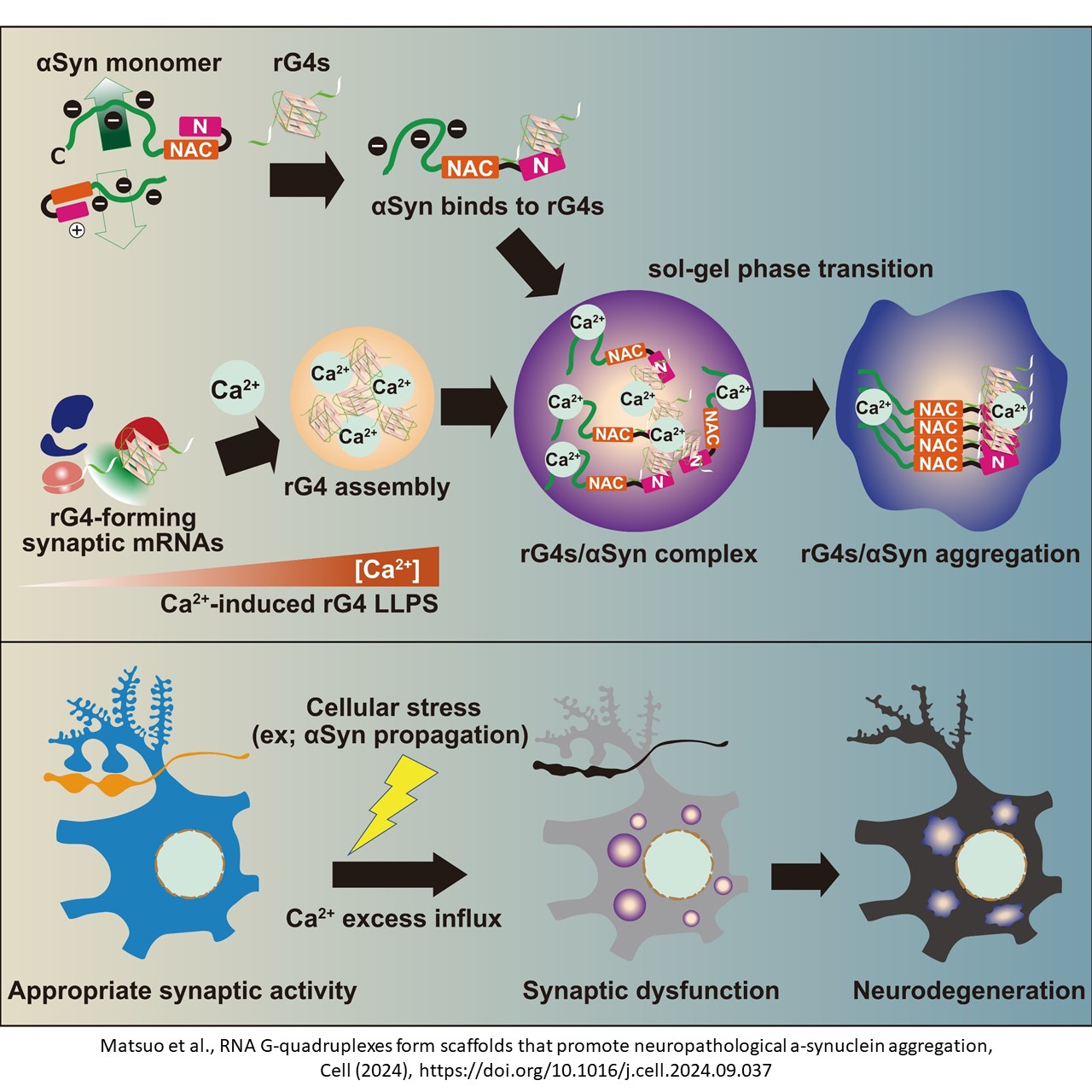Key to Preventing Neurodegeneration in Parkinson’s and Related Disorders

A team of researchers at Kumamoto University has uncovered a groundbreaking mechanism in the formation of harmful protein aggregates that lead to neurodegenerative diseases such as Parkinson's Disease. The team, led by Professor Norifumi Shioda and Associate Professor Yasushi Yabuki, identified for the first time that unique RNA structures called G-quadruplexes (G4s) play a central role in promoting the aggregation of α-synuclein, a protein associated with neurodegeneration. By demonstrating that inhibiting G4 assembly could potentially prevent the onset of synucleinopathies, this discovery positions G4 as a promising target for early intervention in these diseases.In a healthy state, α-synuclein typically regulates neuronal function. However, in neurodegenerative diseases, it aggregates together, leading to cell damage and motor symptoms. The researchers identified that G4s, four-stranded RNA structures that form in response to cellular stress, function as a "scaffold" that facilitates α-synuclein aggregation. Elevated calcium levels, often seen under stress, trigger G4 assembly, which then attracts α-synuclein, converting it into a harmful, aggregate-prone state.
The team went a step further, demonstrating a new approach to prevent this process. They administered 5-aminolevulinic acid (5-ALA), a compound that blocks G4 formation, to model mice exhibiting Parkinson's-like symptoms. Impressively, 5-ALA treatment not only prevented α-synuclein aggregation but also halted the progression of motor symptoms, a promising sign for potential therapies targeting early-stage neurodegeneration.
This breakthrough could significantly advance treatments aimed at neurodegenerative diseases by focusing on G4 regulation. Since G4s are also implicated in other diseases such as Alzheimer’s Disease, this discovery may broaden the impact of such treatments beyond Parkinson’s Disease. These findings were published in the journal Cell on October 18, 2024, shedding new light on preemptive strategies to combat neurodegeneration and improve quality of life for aging populations.

Image Title: Mechanism of Neurodegeneration Involving G4 Assembly
Image Caption: The trigger for neurodegeneration is the assembly of G4 structures driven by increased intracellular calcium ions (Ca2+) due to cellular stress. α-Synuclein binds directly to G4, shifting into an aggregate-prone structure that employs G4 as a scaffold to form harmful clusters. Therefore, inhibiting G4 assembly can prevent α-synuclein aggregation, helping to protect against neuronal function loss.
Reference
Image Caption: The trigger for neurodegeneration is the assembly of G4 structures driven by increased intracellular calcium ions (Ca2+) due to cellular stress. α-Synuclein binds directly to G4, shifting into an aggregate-prone structure that employs G4 as a scaffold to form harmful clusters. Therefore, inhibiting G4 assembly can prevent α-synuclein aggregation, helping to protect against neuronal function loss.
Reference
| Authors |
Kazuya Matsuo, Sefan Asamitsu, Kohei Maeda, Hiroyoshi Suzuki, Kosuke Kawakubo, Ginji Komiya, Kenta Kudo, Yusuke Sakai, Karin Hori, Susumu Ikenoshita, Shingo Usuki, Shiori Funahashi, Hideki Oizumi, Atsushi Takeda, Yasushi Kawata, Tomohiro Mizobata, Norifumi Shioda* and Yasushi Yabuki* |
| Title of original paper |
RNA G-quadruplexes form scaffolds that promote neuropathological a-synuclein aggregation |
| Journal | Cell |
| DOI | 10.1016/j.cell.2024.09.037 |

